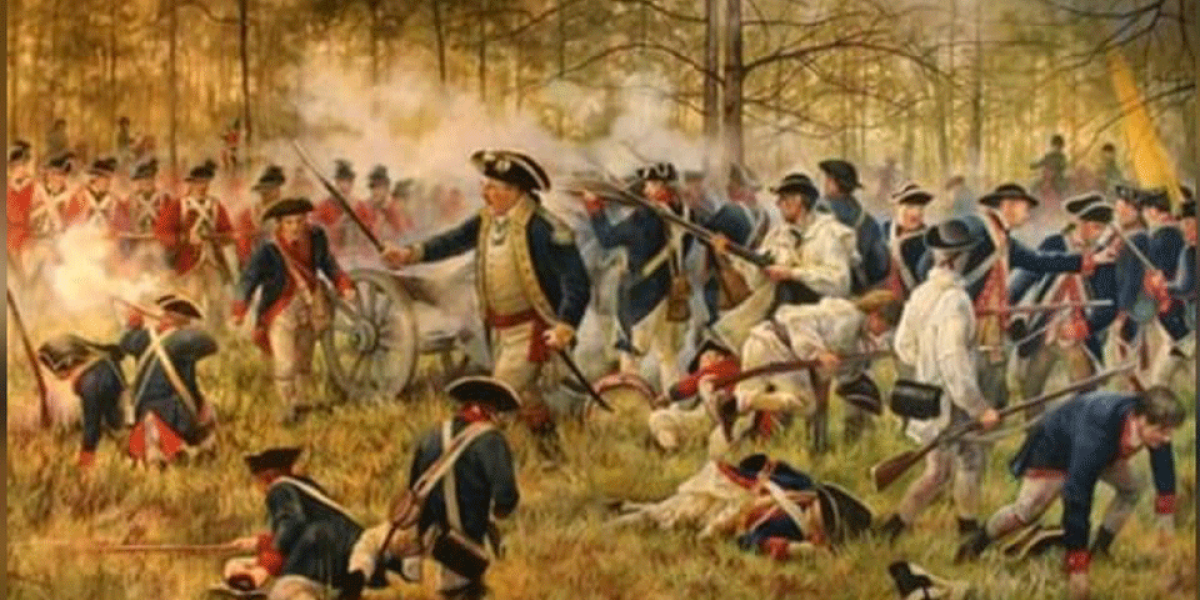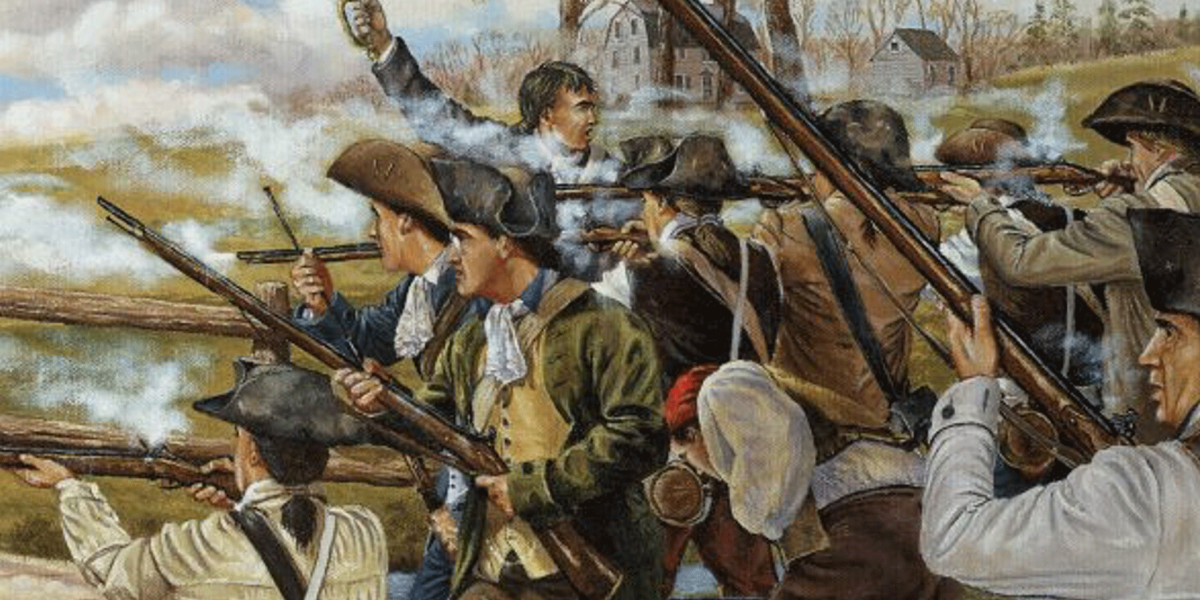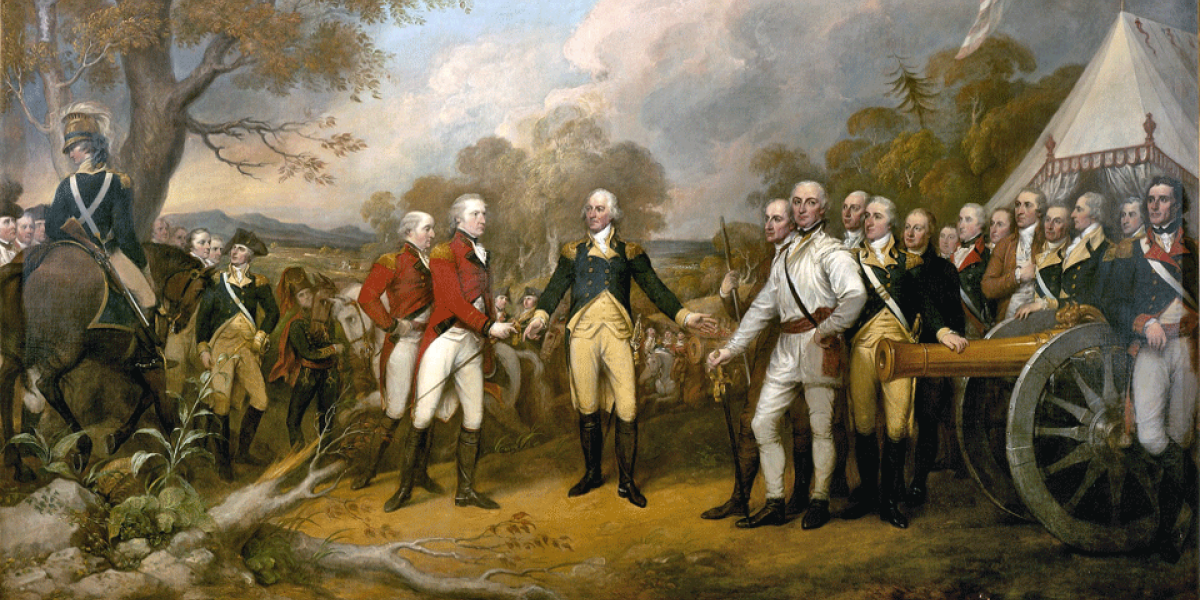Historical Background
| Producer
Following the disastrous defeats at Quebec in December 1775 and the Battle of Long Island in late August 1776 which left New York City occupied for the remainder of the American War for Independence, the American Revolution was on the verge of collapse and the flame of liberty, close to being extinguished, just a year after the signing of The Declaration of Independence. The British plan to crush the failing rebellion was simple: to seize control of the entirety of the Champlain and Hudson valleys in order to completely cut-off the hotbed of New England – the very head of the snake – from the rest of the disloyal colonies.
In the late summer and early autumn of 1777, during one of the darkest hours of the war, with freedom itself in the balance, wave after wave of citizen soldiers – close to 11,000 plus – answered the urgent call and steadily streamed in from the “four corners” to fortify the outmatched American Army that was dug in at Bemus Heights above the Hudson River in a desperate, defensive effort to stop General John Burgoyne’s determined advance to Albany. In doing so, these intrepid patriots nearly tripled the size of Gen. Horatio Gates’ Northern Command – to a total of force of 17,000 plus – in less than six weeks. This seminal moment marked the first time in the American War for Independence that the American Army possessed overwhelming numerical superiority over the enemy on the field of battle. Most crucially, this surprising surge allowed the forces under Gen. Gates to completely surround and lay total siege to the invading army, which forced Burgoyne’s shocking surrender at Saratoga on October 17, 1777.
What prompted this surprising surge of citizen-soldiers? Why did they answer the urgent call to head to the Upper Hudson Valley in time to stop Gen. Burgoyne and keep America’s fight for independence alive? The answer is not simple but it lies in the events that occurred in the eighteen months that unfolded prior to the fierce fighting at Freeman’s Farm in September 1777. The die was cast following the disastrous American defeats at Quebec (December 31, 1775) and Long Island (August 27, 1776); the ensuing British occupation of New York City; the launch of Burgoyne’s massive campaign from Montreal on June 20, 1777; the fateful Fall of Fort Ticonderoga on July 6, 1777; the massacre of Jane McCrea on July 27, 1777; Burgoyne’s consequential crossing of the Hudson on September 13, 1777; and, General William Howe’s campaign to capture the Continental Capital of Philadelphia in September 1777. Massive numbers of citizen soldiers (affiliated with militias) – more than 11,000 – from upstate New York and New England answered the call to head towards the Upper Hudson Valley in the late summer of 1777. These patriots no doubt had heard Thomas Paine’s urgent call to arms in The American Crisis that was first published on December 19, 1776:
These are the times that try men’s souls. The summer soldier and sunshine patriot will, at this moment, shrink from the service to his country; but he that stands it now, deserves the love and thanks of man and woman. Tyranny, like hell, is not easily conquered; yet we have this consolation with us, that the harder the conflict, the more glorious the triumph.
—Thomas Paine
After the stunning American victory at Saratoga on October 17, 1777, the Continental Congress resolved that the states should observe a national day of thanksgiving to commemorate the surrender of General Burgoyne’s army. On November 30, 1777, George Washington, the commander-in-chief of all Continental forces, issued General Orders designating December 18, 1777 – a day that was also observed by all thirteen states – “for solemn thanksgiving and praise” to almighty God for the providential victory at Saratoga.
Importantly, the seismic victory at Saratoga proved to be the decisive turning point of the Revolutionary War as it enabled Benjamin Franklin to finally persuade the French crown to militarily support the American cause. Burgoyne’s surrender at Saratoga, coupled with the prior American victories at Fort Stanwix and Bennington, led directly to the alliances between the United States and France as well as with the Netherlands which ultimately financed much of the new nation’s debts.
On December 6, 1777, Charles Gravier, comte de Vergennes, the French Foreign Minister, agreed to the American request for a military alliance in the wake of the victory at Saratoga. The Franco-American Treaty of Amity and Commerce and the Treaty of Alliance were signed in Paris on February 6, 1778 by Compte de Vergennes and an American delegation comprised of Benjamin Franklin, Arthur Lee, and Silas Deane. Both treaties were ultimately approved by King Louis XVI in early March 1778. Most notably, on March 13, 1778, the French minister in London informed King George III that France recognized the United States as an independent and sovereign nation. On March 17, 1778, England declared war on France, an act which made the American War for Independence a world war. On May 4, 1778, the Continental Congress ratified the Treaty of Alliance with France, prompting additional military and financial assistance. On November 13, 1779, Spain declared war against England as well.
When General Charles Cornwallis surrendered at Yorktown on October 19, 1781, more than half of General George Washington’s total force strength was comprised of French ground (led by Marshal Jean-Baptiste Donatien de Vimeur, comte de Rochambeau) and naval support (under the command of François Joseph Paul, comte de Grasse). This strategic support was made possible solely by the decisive victory at Saratoga four years earlier on October 17, 1777. Less than two years later, the American Revolutionary War was formally ended with the signing of The Treaty of Paris on September 3, 1783.
Saratoga is rightfully and widely viewed as one of the most consequential battles in western civilization as this unexpected victory rescued a revolution that was on the verge of collapse. Without this convincing triumph in the early autumn of 1777, America’s “great experiment” in self-government would not have happened and world history would have taken a very different course.
Support the Project
Our crucial mission cannot be completed without your help.
We are calling on America’s Patriots & Veterans to make a donation towards this worthy project which was started more than 10 years ago.
May all of you, as Americans, never forget your heroic origins and never fail to seek divine guidance… We are forever indebted to those that have given their lives that we might be free.
— PRESIDENT RONALD REAGAN

















